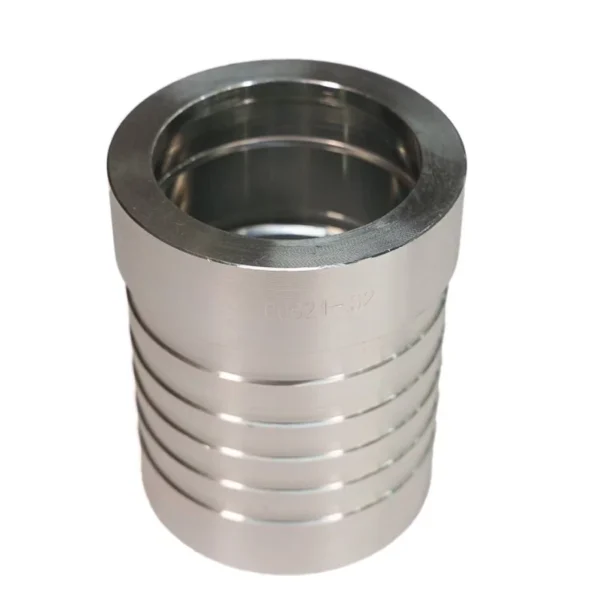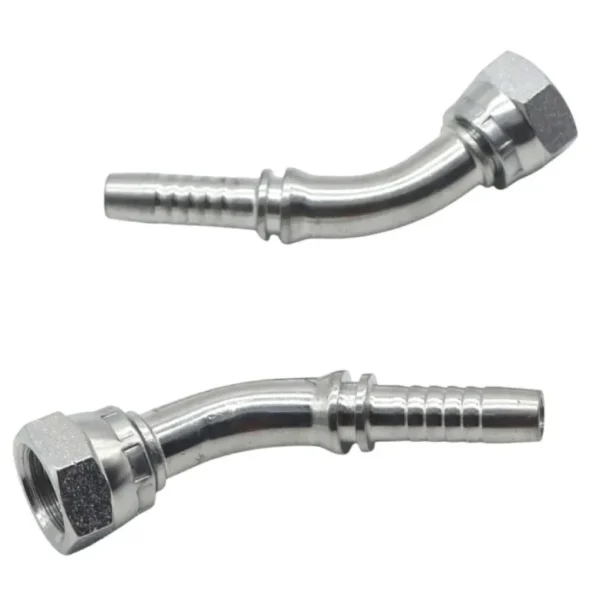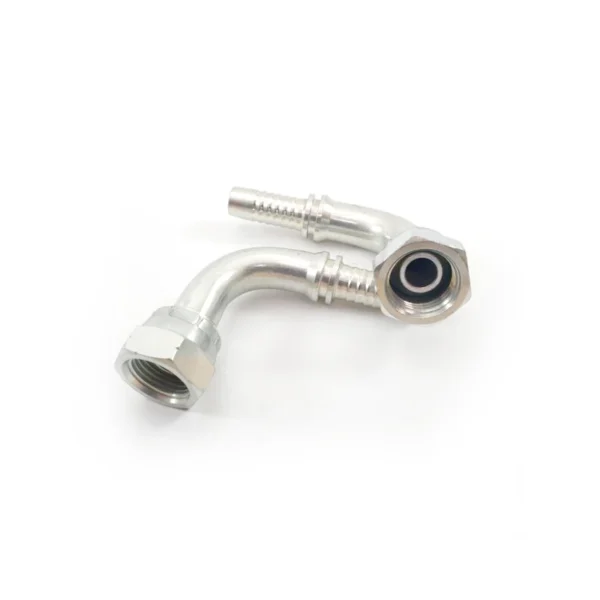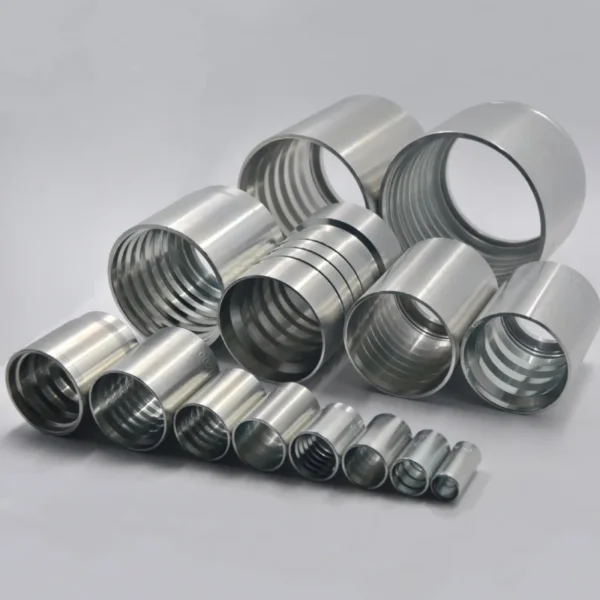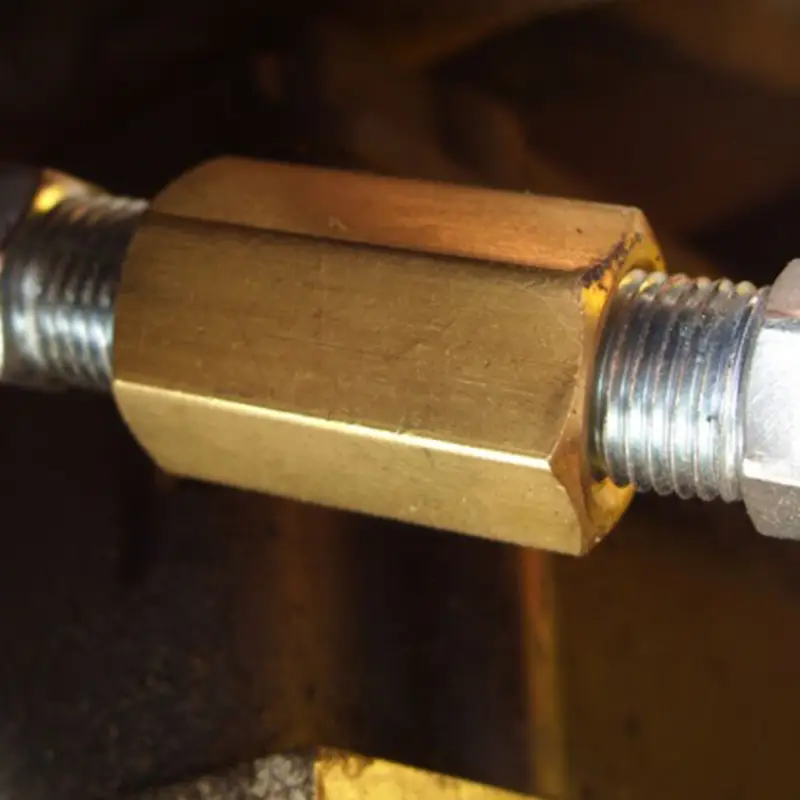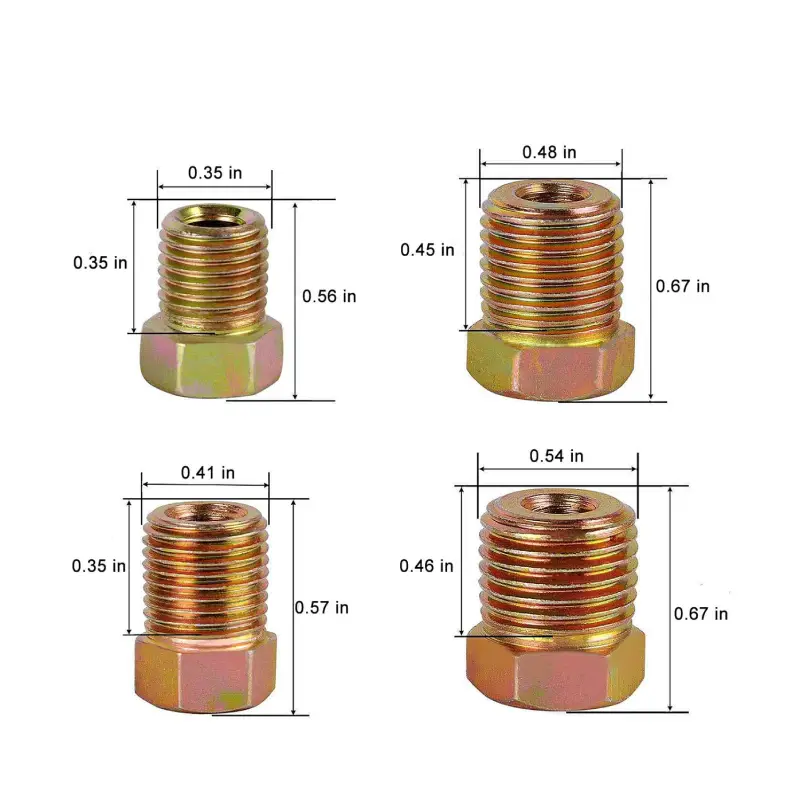Interlock fittings are essential components in high-pressure hydraulic systems, providing secure and reliable connections. Their unique design, featuring interlocking teeth, ensures a robust grip on hydraulic hoses, preventing slippage and leaks under extreme conditions. Understanding their construction and applications is crucial for maintaining system integrity and safety.
This guide will delve into the intricacies of interlock fittings, exploring their various types, materials, and installation techniques. We’ll also cover best practices for selecting and maintaining these fittings to optimize performance and prevent costly failures, ensuring your hydraulic systems operate efficiently and safely.
What Are Interlock Fittings
Recommended Interlock Fittings
-
00621 Interlock Ferrule
-
22643 BSPP Female Interlock 45°
-
22693 Female BSPP Interlock
-
4SH/R12 interlock ferrule
Interlock fittings are specialized hydraulic connectors designed to provide secure and reliable connections in high-pressure hydraulic systems. Their unique design incorporates an interlocking mechanism between the fitting and the hose, ensuring a robust connection that can withstand extreme pressures and vibrations. This interlocking feature minimizes the risk of hose slippage and leaks, making them essential in demanding applications.
These fittings are commonly used in industries such as construction, mining, and oil and gas, where hydraulic systems operate under severe conditions. Interlock fittings are available in various configurations and materials to accommodate different hose sizes and pressure ratings. Their precise engineering and durable construction contribute to the overall safety and efficiency of hydraulic operations, reducing downtime and maintenance costs.
Types of Interlock Fittings
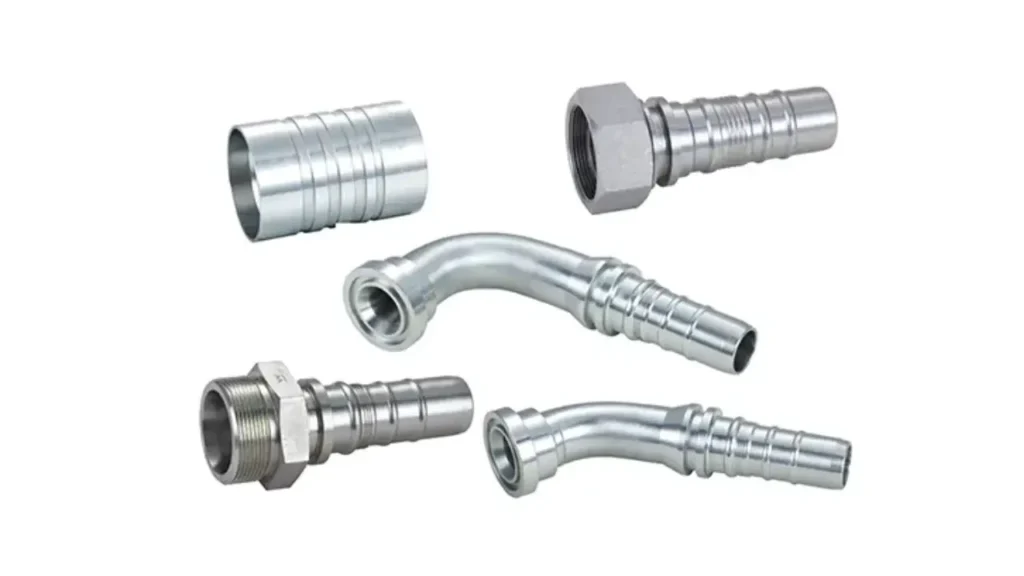
Interlock fittings are designed to provide secure and reliable connections in high-pressure hydraulic systems, offering various types to suit different applications and requirements. Here are the primary types of interlock fittings:
Standard Interlock Fittings Interlock Fittings
Standard interlock fittings are the most common type, designed for general high-pressure hydraulic applications. They feature an interlocking mechanism that provides a robust connection, preventing hose slippage and leaks. These fittings are available in various sizes and materials to accommodate different hose types and pressure ratings. Their versatility makes them suitable for a wide range of industries, including construction, manufacturing, and industrial machinery.
High-Pressure Interlock Fittings Interlock Fittings
High-pressure interlock fittings are specifically designed for extremely high-pressure hydraulic systems, such as those found in oil and gas drilling or heavy-duty industrial applications. These fittings are constructed from high-strength materials and feature enhanced interlocking mechanisms to withstand extreme pressures and vibrations. They ensure reliable performance and prevent failures in demanding environments, contributing to safety and efficiency.
Skive Interlock Fittings Interlock Fittings
Skive interlock fittings require the hydraulic hose’s outer cover to be removed, or skived, before assembly. This process allows for a direct metal-to-metal connection between the fitting and the hose reinforcement, enhancing the connection’s strength and durability. Skive interlock fittings are ideal for high-pressure and high-temperature applications, providing superior resistance to hose slippage and leaks. They are commonly used in heavy-duty hydraulic systems where maximum connection integrity is critical.
No-Skive Interlock Fittings Interlock Fittings
No-skive interlock fittings are designed for use with hydraulic hoses that do not require the outer cover to be removed before assembly. This simplifies the installation process and reduces assembly time. These fittings feature an interlocking mechanism that securely grips the hose without the need for skiving, providing reliable connections in high-pressure applications. They are suitable for various industries, offering convenience and efficiency without compromising performance.
What Are Interlock Fittings Made of
Interlock fittings are engineered to withstand high pressures and demanding conditions, necessitating robust materials in their construction. Here are the primary materials used:
Carbon Steel
- Carbon steel is the most common material for interlock fittings due to its high strength and durability. It offers excellent resistance to pressure and mechanical stress, making it suitable for heavy-duty hydraulic applications. Carbon steel fittings are often treated with protective coatings, such as zinc plating, to enhance corrosion resistance and prolong their lifespan in harsh environments.
Stainless Steel
- Stainless steel is used in applications where corrosion resistance is paramount, such as in marine environments or chemical processing plants. Its superior resistance to rust and chemical degradation ensures long-term reliability and performance in corrosive settings. Stainless steel interlock fittings are also preferred in industries where cleanliness and hygiene are critical, such as food processing and pharmaceuticals.
Brass
- Brass is sometimes used for interlock fittings in lower-pressure applications or where specific fluid compatibility is required. Its corrosion resistance and machinability make it a suitable material for certain hydraulic systems. Brass fittings are often used in applications involving water or other non-corrosive fluids, where their cost-effectiveness and ease of use are advantageous.
What Are Interlock Fittings Used for
Interlock fittings are engineered to provide secure and reliable connections in high-pressure hydraulic systems, making them essential in various demanding applications. Here are the primary interlock fitting uses:
High-Pressure Hydraulic Systems
- Interlock fittings are primarily used in high-pressure hydraulic systems where robust connections are crucial. These systems operate under extreme pressures and vibrations, requiring fittings that can withstand these conditions without failure. Applications include heavy machinery, construction equipment, and industrial hydraulic presses. The interlocking mechanism ensures a secure connection, preventing hose slippage and leaks, which are critical for safety and efficiency.
Heavy Machinery and Construction Equipment
- In heavy machinery and construction equipment, interlock fittings are vital for connecting hydraulic hoses that power various functions. These machines operate in harsh environments and under heavy loads, requiring fittings that can withstand extreme conditions. Applications include excavators, bulldozers, cranes, and mining equipment. The robust design of interlock fittings ensures reliable performance, minimizing downtime and maintenance costs.
Oil and Gas Industry
- The oil and gas industry relies heavily on interlock fittings for connecting hydraulic lines in drilling and production equipment. These applications involve high pressures, extreme temperatures, and corrosive environments, requiring fittings that can maintain integrity and prevent leaks. Interlock fittings are used in offshore platforms, drilling rigs, and pipeline systems, ensuring safe and efficient operations.
Mining and Industrial Applications
- Mining and industrial applications also utilize interlock fittings for connecting hydraulic systems that power various equipment. These applications involve heavy loads, abrasive materials, and demanding operating conditions, requiring fittings that can withstand these challenges. Interlock fittings are used in mining machinery, industrial presses, and manufacturing equipment, ensuring reliable and long-lasting performance.
How to Install Interlock Fittings
Installing interlock fittings correctly is crucial for ensuring secure and leak-free connections in high-pressure hydraulic systems. Proper installation prevents costly downtime and potential safety hazards. This guide outlines the essential steps for installing interlock fittings, emphasizing precision and adherence to manufacturer specifications.
Step 1: Prepare the Hose and Fitting
Begin by carefully inspecting the hydraulic hose and fitting for any damage or debris. Ensure the hose is cut squarely using a hydraulic hose cutter to achieve a clean, even edge. Select the correct interlock fitting size and type that matches the hose and application requirements. Cleanliness and proper sizing are essential for a reliable connection.
Proper preparation ensures a secure and leak-free installation. Any dirt or debris can compromise the seal, leading to leaks and potential failures. A square cut on the hose ensures proper insertion and seating within the fitting, allowing for optimal engagement of the interlocking mechanism. Selecting the correct fitting size prevents slippage and ensures a tight, secure fit under high pressure.
Step 2: Insert the Hose into the Fitting
Carefully insert the hydraulic hose into the fitting until it reaches the designated insertion depth. Ensure the hose is fully seated against the fitting’s stop. Proper insertion is crucial for engaging the interlocking mechanism and creating a secure connection. Verify that the hose is aligned straight with the fitting during insertion.
Full insertion ensures that the interlock fitting can properly grip the hose, creating a reliable seal. If the hose is not fully inserted, the connection may fail under pressure, leading to leaks or hose slippage. Proper alignment prevents uneven stress distribution and ensures the interlocking mechanism functions correctly.
Step 3: Crimp the Ferrule
Using a hydraulic crimping tool and the appropriate crimping dies, crimp the ferrule onto the hose. Follow the manufacturer’s specifications for crimping pressure and die selection. Apply even pressure and ensure the crimp is uniform around the ferrule. Proper crimping is essential for engaging the interlocking mechanism and creating a leak-free connection.
Uniform crimping ensures that the ferrule grips the hose evenly, preventing leaks and ensuring a secure connection under high pressure. Using the correct crimping pressure and dies is crucial for achieving the desired crimp dimensions. Inspect the crimped ferrule for any signs of damage or deformation, ensuring the interlocking mechanism is properly engaged.
Step 4: Inspect the Assembly
After crimping, thoroughly inspect the assembly to ensure the ferrule is securely attached to the hose and fitting. Check for any signs of leaks, damage, or deformation. Verify that the interlocking mechanism is properly engaged and that the hose is securely held in place. Perform a pressure test if necessary to verify the connection’s integrity.
Thorough inspection prevents potential failures and ensures the connection is leak-free and secure. Verify that the ferrule is properly crimped and that the hose is securely held in place. Pressure testing simulates operating conditions and confirms the connection’s reliability and integrity under high pressure.
How to Choose the Right Interlock Fittings
Selecting the right interlock fittings for your hydraulic system is crucial for ensuring reliable and leak-free connections under high pressure. Proper selection prevents costly downtime and potential safety hazards. This guide outlines the essential factors to consider when choosing interlock fittings.
Step 1: Determine System Requirements
Begin by assessing the specific requirements of your hydraulic system, including the operating pressure, temperature, and fluid type. Consider the hose size and type, as well as the fitting style, to ensure compatibility. The interlock fitting material should also be chosen based on the environment and fluid compatibility to prevent corrosion or degradation.
Understanding your system’s operating conditions is fundamental for selecting the appropriate interlock fittings. Operating pressure and temperature ratings must match or exceed the system’s demands to prevent failures. Fluid compatibility ensures the fitting material won’t degrade or react with the hydraulic fluid. Hose size and type dictate the fitting dimensions and design.
Step 2: Evaluate Fitting Design and Construction
Next, evaluate the interlock fitting’s design and construction to ensure it meets industry standards and provides a secure connection. Look for fittings that offer consistent crimping performance and are manufactured to precise dimensions. Consider the fitting’s ease of installation and availability, as well as the manufacturer’s reputation for quality and reliability.
The design of the interlocking mechanism is critical for ensuring a robust connection. Look for fittings with well-engineered interlocking features that provide reliable hose retention under high pressure and vibration. Precise manufacturing dimensions ensure a proper fit and optimal performance. Manufacturer reputation and industry certifications indicate quality and reliability.
Step 3: Consider Application-Specific Needs
Tailor your selection to the specific needs of your application. For heavy-duty applications, such as construction or mining, choose interlock fittings with high-strength materials and robust designs. In corrosive environments, opt for stainless steel fittings. For applications requiring frequent assembly and disassembly, consider fittings with user-friendly designs.
Heavy-duty applications demand fittings that can withstand extreme conditions and heavy loads. Corrosive environments require materials that resist chemical degradation and rust. Frequent assembly and disassembly necessitate fittings that are easy to install and maintain, reducing downtime and maintenance costs.
Step 4: Verify Compatibility and Standards
Ensure the interlock fittings are compatible with your hydraulic hoses and fittings. Verify that the fittings meet relevant industry standards, such as SAE or ISO, to ensure quality and reliability. Consult with hydraulic specialists or manufacturers to confirm compatibility and select the appropriate fittings for your system.
Compatibility between fittings, hoses, and other hydraulic components is essential for system integrity. Industry standards ensure the fittings meet minimum quality and performance requirements. Consulting with experts provides valuable guidance and prevents costly mistakes.
How to Avoid Interlock Fitting Failures
Preventing interlock fitting failures is crucial for maintaining the safety and efficiency of hydraulic systems. Proper selection, installation, and maintenance are essential to minimize the risk of failures. Here are key methods to avoid interlock fitting failures:
Step 1: Select Compatible Fittings
Choose interlock fittings that are compatible with the hydraulic hoses, fluids, and operating conditions of your system. Ensure the fittings meet or exceed the pressure, temperature, and corrosion resistance requirements of your application. Selecting the right fittings is the foundation for a reliable connection.
Compatibility ensures the fittings can withstand the system’s demands without degradation or failure. Verify the manufacturer’s specifications and guidelines to ensure compatibility. Consider the environmental conditions and fluid properties to select the appropriate materials and designs.
Step 2: Ensure Proper Hose Preparation and Installation
Prepare the hydraulic hoses correctly by cutting them squarely and cleaning them thoroughly. Follow the manufacturer’s instructions for proper insertion depth and crimping procedures. Incorrect hose preparation or installation can lead to leaks and premature failures.
Proper hose preparation is critical for avoiding interlock fitting failures. A clean, square cut ensures the hose is fully and evenly seated within the fitting. Accurate insertion depth ensures optimal engagement of the interlocking mechanism. Proper crimping ensures a secure and leak-free connection.
Step 3: Use Correct Crimping Tools and Techniques
Use a calibrated hydraulic crimping machine with the correct crimping dies for the interlock fittings. Follow the manufacturer’s specifications for crimping pressure and die selection. Ensure the crimp is uniform and within the specified dimensions. Improper crimping can lead to leaks or connection failures.
Correct crimping technique ensures the ferrule grips the hose evenly and securely. Using the right crimping dies and pressure is crucial for achieving the desired crimp dimensions. Calibrate the crimping machine regularly to maintain accuracy. Monitor the crimping process to ensure uniformity and consistency.
Step 4: Conduct Regular Inspections and Maintenance
Perform regular inspections of the interlock fittings and hydraulic hoses for signs of wear, damage, or leaks. Check for corrosion, cracks, or deformations. Conduct pressure tests to verify the connection’s integrity. Timely maintenance and replacements prevent failures.
Regular inspections are essential for detecting potential issues before they lead to failures. Early detection of wear or damage allows for timely replacements. Pressure testing simulates operating conditions and confirms the connection’s reliability. Keep detailed records of inspections and maintenance activities.
Conclusion
Interlock fittings are indispensable for high-pressure hydraulic systems, ensuring secure and leak-free connections. Their robust design and precise engineering make them ideal for demanding applications where reliability is paramount. Understanding their types and proper installation is crucial for maximizing system performance.
The unique locking mechanism of interlock fittings provides superior resistance to pressure and vibration, minimizing the risk of failures. This translates to reduced downtime and increased safety, making them a cost-effective solution in the long run. Proper selection and maintenance further enhance their longevity and efficiency.
For high-quality hydraulic interlock fittings tailored to your specific needs, request a quote from DF Hydraulics today. We offer a comprehensive range of durable and reliable fittings, ensuring secure and efficient hydraulic connections. Get in touch to discuss your requirements and benefit from our expert services.

